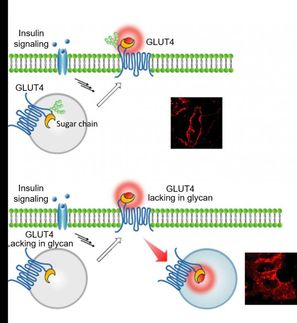Rapid and detailed analysis of proteins
proteins are vital participants in virtually all life processes, including growth, repair and signaling in cells; catalysis of chemical reactions and defense against infection. For these reasons, proteins can provide critical signposts of health and disease, provided they can be identified and assessed in a clinical setting.
Accurately characterizing proteins for diagnostic and therapeutic purposes has been an enormous challenge for the medical community. At the Biodesign Institute's Molecular Biomarkers Laboratory at Arizona State University, research focuses on the analysis of proteins using mass spectrometry (MS) —a powerful tool for the detailed investigation of protein structure.
The facility is under the direction of Dr. Randy Nelson, a pioneer in the field and developer Mass Spectrometric Immunoassay (MSIA), a high-throughput protein quantification technique that also provides detailed protein information including post-translation modifications and genetic variants. Currently, the research group is focused on developing and translating new assays for protein biomarkers related to cancer, diabetes and heart disease.
In a new study appearing in the journal PLOS ONE, lead author Dr. Paul Oran and his colleagues demonstrate the power of the MSIA platform, with a vision towards clinical adoption. The research reports a high-throughput method for quantifying and characterizing insulin-like growth factor 1 (or IGF1) at a rate of >1,000 human samples a day. IGF1 is a critical protein implicated in human growth disorders as well as certain forms of cancer.
Insulin-like growth factor 1 is a 70-amino acid protein involved in cell growth, differentiation and transformation. Most IGF1 is secreted by the liver and acts as an endocrine hormone.
"For several decades, researchers have struggled to accurately quantify IGF1, an important molecule used to diagnose different kinds of growth disorders," Oran says.
In addition to providing a mass spectrometry-based IGF1 assay capable of being used clinically someday, the new research reports—for the first time— how efficient and cost-effective the technique can be. In their study, they were able to analyze over 1000 samples in a single day, (a milestone needed for eventual clinical use). "From our knowledge, this is the first demonstration of a MS-based targeted-proteomics assay for IGF1—or any protein for that matter—capable of running at this speed and cost," says Dr. Oran.
Mass spectroscopy can readily identify genetic variants that are expressed on the protein level (for example Single-nucleotide polymorphisms). Such changes may alter or disable the function of the resulting protein. Further, mass spectroscopy can pinpoint changes that may occur to the protein after it has already been produced from the gene template—so-called post-translational modifications.
The complex picture of multiple variants of a given gene coupled with post-translational protein alterations is referred to as microheterogeneity. Resulting protein variants play a major role in a variety of diseases, yet their identification has been fraught with difficulty. The current clinical standard for many types of protein quantification has been a method known as ELISA (for enzyme-linked immunosorbent assay).
Mass spectroscopy however is able to analyze critical protein variants wheras ELISAs can not. Microheterogeneity can also produce interference in ELISA tests, causing them to mechanically fail, yielding false readouts. Analysis through mass spectroscopy fixes the interference problem, additionally producing a rich portrait of protein information not available to ELISA. "As we and others have seen repeatedly, microheterogeneity is linked to many forms of disease," Oran says.
A mass spectrometer is an analytical instrument capable of producing spectra of the molecular masses of molecules contained in a sample. Once a sample is ready to be analyzed on a mass spectrometer, a protein and its variants can then be separated and categorized by their unique mass-to-charge ratio, which provides a sort of molecular fingerprint.
In the case under study in the current paper, IGF1 molecules detected in blood are usually bound with two other proteins. "To accurately quantify this molecule, we have to first disrupt this complex so we can get an accurate readout of total IGF1," Oran says.
The platform described in the current study is a so-called "top-down" approach to protein quantification. Instead of digesting the protein by means of proteases like trypsin and extracting the resulting tiny peptide fragments for analysis by mass spectroscopy ("bottom-up"), a top down method captures a full length protein and any protein variants in their entirety, enabling rapid analysis of a protein and its variants. "Other competing bottom-up approaches struggle to identify and thus ignore microheterogeneity, cost substantially more, and require more time and labor per sample," Oran says.
In the current study, the group quantified 1,054 human samples in 9 hours—a throughput rate on a par with ELISA—while providing more detailed information on the IGF1 protein, available only through mass spectroscopy. The new method also detected mutations in roughly 1 percent of the samples tested.
Future research will entail a larger validation study intended to support clinical adoption of the assay. The large universe of human proteins provides a broad range of plausible diagnostic targets. Several dozen assays using the technology have already been developed in Nelson's lab.
"From our knowledge, this is really the first viable option for routine analysis in a clinical laboratory that meets cost and time requirements while taking advantage of mass spectroscopy to quantify proteins," Oran says.






























































